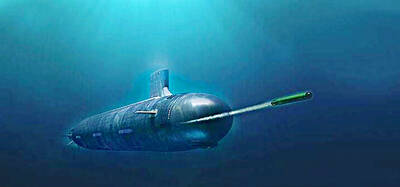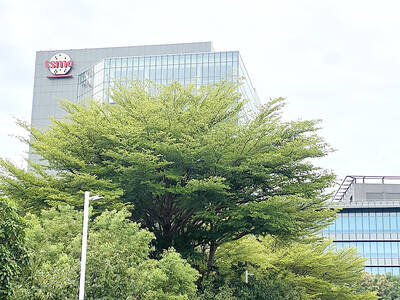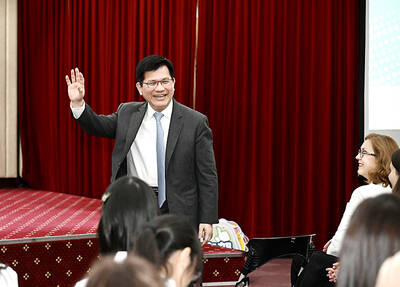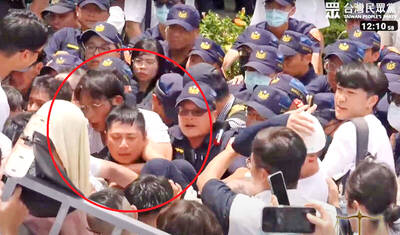The US is seriously considering stationing a second aircraft carrier in the Asia Pacific region in the face of threats posed by nuclear-armed North Korea and a potential crisis across the Taiwan Strait, officials and analysts say.
The move is more likely, they said, because the US Navy need not send aircraft carriers anymore on a rotational basis to the Persian Gulf, where it had to enforce no-fly zones before Iraqi leader Saddam Hussein's ouster.
The USS Kitty Hawk is the only aircraft carrier in the Asia-Pacific region at present and is permanently based in Japan to provide immediate response in case of a crisis across the Taiwan Strait or in the Korean peninsula.
The top US military commander in the Asia-Pacific region, Admiral Thomas Fargo, recently recommended to Defense Secretary Donald Rumsfeld that an additional Navy carrier be permanently placed in the region "somewhere between Hawaii and Guam," a government official told reporters.
"He made this recommendation in response to defense planning guidance, which states that emphasis be placed on the East Asian Littoral," said the official, speaking on condition of anonymity.
Fargo wanted the carrier to be maintained at a "high state of level readiness," the official stressed.
"The final decision on which carrier should be moved and from where and to which new home port" is likely to be made as part of the base realignment and closure process for fiscal year 2005, he said.
The new fiscal year begins in October and the process is mandated to review and close bases or move military units if necessary.
Fargo, who heads the Hawaii-based US Pacific Command, directing Army, Navy, Marine Corps and Air Force operations across the region, told a naval forum recently it made sense for a second aircraft carrier in Asia Pacific.
"I believe I've stated pretty clearly we need to move another Carrier Strike Group to the Pacific that can operate on the same model as the Kitty Hawk -- collocated with its air wing and funded to level readiness," he said.
Aircraft carriers covered by such a high state of readiness are provided enough training, spare parts and ammunition resources so that the ship is always ready to move on just a four or five-day notice, the official said.
The US has 12 aircraft carriers -- six each in the Atlantic and Pacific region. Their main role is to deploy aircraft, allowing the military to project air power at great distances without having to depend on local bases for land-based aircraft.
"The need for a second aircraft carrier in East Asia is long overdue, perhaps since 1996," said military expert Richard Fisher, vice-president of International Assessment and Strategy Center, a Washington-based think tank.
He was referring to tensions that year when the US sent two aircraft carrier groups to the Taiwan Strait after China tested ballistic missiles by lobbing them near Taiwan's major ports.
That deployment was its biggest to the region since the Vietnam War.
Fisher said another aircraft carrier could deter conflict across the Taiwan Strait and prevent North Korea from being adverturesome.
It would also reassure American friends and allies in Asia that the US remained commited to a peaceful region, the official said.
John Tkacik, research fellow at the Heritage Foundation's Asia Studies Center, said China was becoming "very aggressive and assertive" in the East China Sea and waters in the Japanese exclusive economic zone.
"There is a feeling that Chinese growing naval presence if not responded to would basically signal to East Asia that China is the up and coming power and the United States is the receding power," he said.
Tkachik said "certainly a second carrier is needed and I have no doubt that the contingency would a China contingency."
China has repeatedly threatened to invade Taiwan should the democratic country declare formal independence, prompting Taipei to keep seeking advanced weaponry to defend itself.

FIREPOWER: On top of the torpedoes, the military would procure Kestrel II anti-tank weapons systems to replace aging license-produced M72 LAW launchers Taiwan is to receive US-made Mark 48 torpedoes and training simulators over the next three years, following delays that hampered the navy’s operational readiness, the Ministry of National Defense’s latest budget proposal showed. The navy next year would acquire four training simulator systems for the torpedoes and take receipt of 14 torpedoes in 2027 and 10 torpedoes in 2028, the ministry said in its budget for the next fiscal year. The torpedoes would almost certainly be utilized in the navy’s two upgraded Chien Lung-class submarines and the indigenously developed Hai Kun, should the attack sub successfully reach operational status. US President Donald Trump

Taiwan Semiconductor Manufacturing Co (TSMC, 台積電) is expected to start construction of its 1.4-nanometer chip manufacturing facilities at the Central Taiwan Science Park (CTSP, 中部科學園區) as early as October, the Chinese-language Liberty Times (the Taipei Times’ sister newspaper) reported yesterday, citing the park administration. TSMC acquired land for the second phase of the park’s expansion in Taichung in June. Large cement, construction and facility engineering companies in central Taiwan have reportedly been receiving bids for TSMC-related projects, the report said. Supply-chain firms estimated that the business opportunities for engineering, equipment and materials supply, and back-end packaging and testing could reach as high as

ALL QUIET: The Philippine foreign secretary told senators she would not respond to questions about whether Lin Chia-lung was in the country The Ministry of Foreign Affairs on Wednesday confirmed that a business delegation is visiting the Philippines, but declined to say whether Minister of Foreign Affairs Lin Chia-lung (林佳龍) is part of the group, as Philippine lawmakers raised questions over Lin’s reported visit. The group is being led by Deputy Minister of Agriculture Huang Chao-chin (黃昭欽), Chinese International Economic Cooperation Association (CIECA) chairman Joseph Lyu (呂桔誠) and US-Taiwan Business Council (USTBC) vice president Lotta Danielsson, the ministry said in a statement. However, sources speaking on condition of anonymity said that Lin is leading the delegation of 70 people. Filinvest New Clark City Innovation Park

TPP RALLY: The clashes occurred near the Chiang Kai-shek Memorial Hall on Saturday at a rally to mark the anniversary of a raid on former TPP chairman Ko Wen-je People who clashed with police at a Taiwan People’s Party (TPP) rally in Taipei on Saturday would be referred to prosecutors for investigation, said the Ministry of the Interior, which oversees the National Police Agency. Taipei police had collected evidence of obstruction of public officials and coercion by “disorderly” demonstrators, as well as contraventions of the Assembly and Parade Act (集會遊行法), the ministry said in a statement on Sunday. It added that amid the “severe pushing and jostling” by some demonstrators, eight police officers were injured, including one who was sent to hospital after losing consciousness, allegedly due to heat stroke. The Taipei